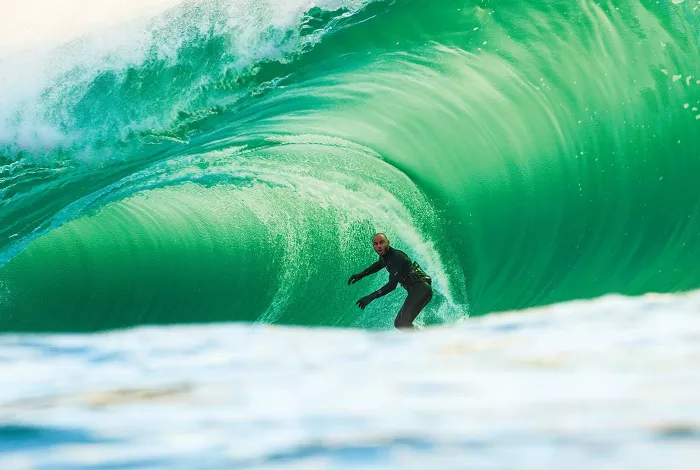Surfing is an exhilarating sport that depends on finding the right waves. Different types of waves suit various skill levels and styles. Understanding what makes a wave great for surfing is key to improving your experience in the water.
What Makes a Wave Good for Surfing?
Several factors determine whether a wave is ideal for surfing:
Wave Shape: Clean, peeling waves are easier to ride. They form a smooth face for the surfer to maneuver on.
Wave Size: Small waves are better for beginners, while advanced surfers prefer larger, more powerful waves.
Wave Break Type: Waves can break in different ways, such as on a beach, reef, or point. Each offers a unique experience.
Wind Conditions: Offshore winds create clean waves by holding up their faces, making them more rideable.
Tide: Tidal changes can affect wave quality, with some spots being better at high tide and others at low tide.
Types of Waves for Surfing
There are several types of waves, each offering a distinct surfing experience.
Beach Break Waves
Beach break waves form when waves crash onto sandy bottoms. These waves are common at most beaches and vary in size and shape depending on the conditions.
Best For: Beginners and intermediate surfers.
Advantages: Softer landings due to sandy bottoms, making them safer.
Famous Spots: Huntington Beach, California; Hossegor, France.
Reef Break Waves
Reef break waves occur when waves break over a coral reef or rocky bottom. These waves are often hollow and powerful, creating barrels.
Best For: Advanced surfers.
Advantages: Consistent and predictable wave patterns.
Famous Spots: Pipeline, Hawaii; Teahupo’o, Tahiti.
Point Break Waves
Point break waves form when waves break along a point of land, often over rocks. These waves can be long and smooth, providing an excellent ride.
Best For: Intermediate to advanced surfers.
Advantages: Long rides allow for multiple maneuvers.
Famous Spots: Jeffreys Bay, South Africa; Rincon, California.
River Mouth Waves
River mouth waves occur where rivers meet the ocean, creating sandbars that shape the waves. These waves are consistent and fun to surf.
Best For: All skill levels, depending on the wave size.
Advantages: Smooth and predictable waves.
Famous Spots: Mundaka, Spain; Barra de la Cruz, Mexico.
Wave Sizes and Their Suitability
Small Waves (1–3 Feet)
Small waves are gentle and easy to paddle into, making them ideal for learning. They are also perfect for practicing basic skills like balance and turning.
Best For: Beginners.
Examples: Waikiki Beach, Hawaii.
Medium Waves (4–6 Feet)
Medium-sized waves offer more power and speed, allowing for intermediate maneuvers like cutbacks and floaters.
Best For: Intermediate surfers.
Examples: Trestles, California.
Big Waves (7 Feet and Above)
Big waves require skill, experience, and confidence. These waves are powerful and can be dangerous but offer incredible rides for those who can handle them.
Best For: Advanced surfers.
Examples: Mavericks, California; Jaws, Hawaii.
Ideal Wave Conditions for Surfing
Offshore Winds
Offshore winds blow from land to sea, holding the wave face up and making it smooth. These conditions are ideal for most surf spots.
Swell Direction and Size
The direction and size of the swell affect how waves break. Understanding the swell forecast is essential for choosing the right spot.
Tide Levels
Tides influence the wave’s shape and break location. High tide can make some spots better, while low tide may improve others.
Best Waves for Beginners
Whitewater Waves
Whitewater waves are the broken waves near the shore. They are easy to catch and offer a safe environment for beginners to practice.
Examples: Bondi Beach, Australia; La Jolla Shores, California.
Gentle Beach Breaks
Soft, slow-breaking waves at sandy beaches provide the perfect conditions for learning.
Examples: Byron Bay, Australia; Waikiki, Hawaii.
Best Waves for Advanced Surfers
Advanced surfers seek challenging waves that require skill and experience.
Barrels
Barrels are hollow waves that allow surfers to ride inside the wave. They are thrilling but require precise timing and skill.
Examples: Pipeline, Hawaii; Supertubos, Portugal.
Big Wave Spots
Big wave surfing is for the elite. Waves at these spots can reach heights of 20–50 feet or more. Surfers need special boards and training to handle the power.
Examples: Nazaré, Portugal; Mavericks, California.
Famous Surfing Destinations
Surfing has iconic locations worldwide, each known for its unique waves.
Hawaii
Hawaii is the birthplace of surfing and offers waves for all levels.
Best Spots: Waikiki (beginners), Pipeline (advanced).
Australia
Australia boasts world-class waves and consistent surf year-round.
Best Spots: Bells Beach, Gold Coast.
Indonesia
Indonesia is a paradise for advanced surfers, with powerful reef breaks and consistent waves.
Best Spots: Uluwatu, Padang Padang.
California
California offers a mix of beach, point, and reef breaks suitable for all levels.
Best Spots: Trestles, Malibu.
South Africa
South Africa’s coastline provides long point breaks and powerful waves.
Best Spots: Jeffreys Bay, Durban.
How to Choose the Right Waves
Skill Level: Beginners should stick to gentle beach breaks, while advanced surfers can tackle barrels and big waves.
Board Type: Longboards work well on small, slow waves. Shortboards perform best on faster, steeper waves.
Safety: Always prioritize safety. Avoid surfing spots beyond your skill level or in hazardous conditions.
Conclusion
The best waves for surfing depend on your skill level, goals, and preferences. Whether you’re riding gentle beach breaks or tackling powerful reef waves, the thrill of surfing is unmatched. By understanding wave types and conditions, you can find the perfect waves for an unforgettable experience.

